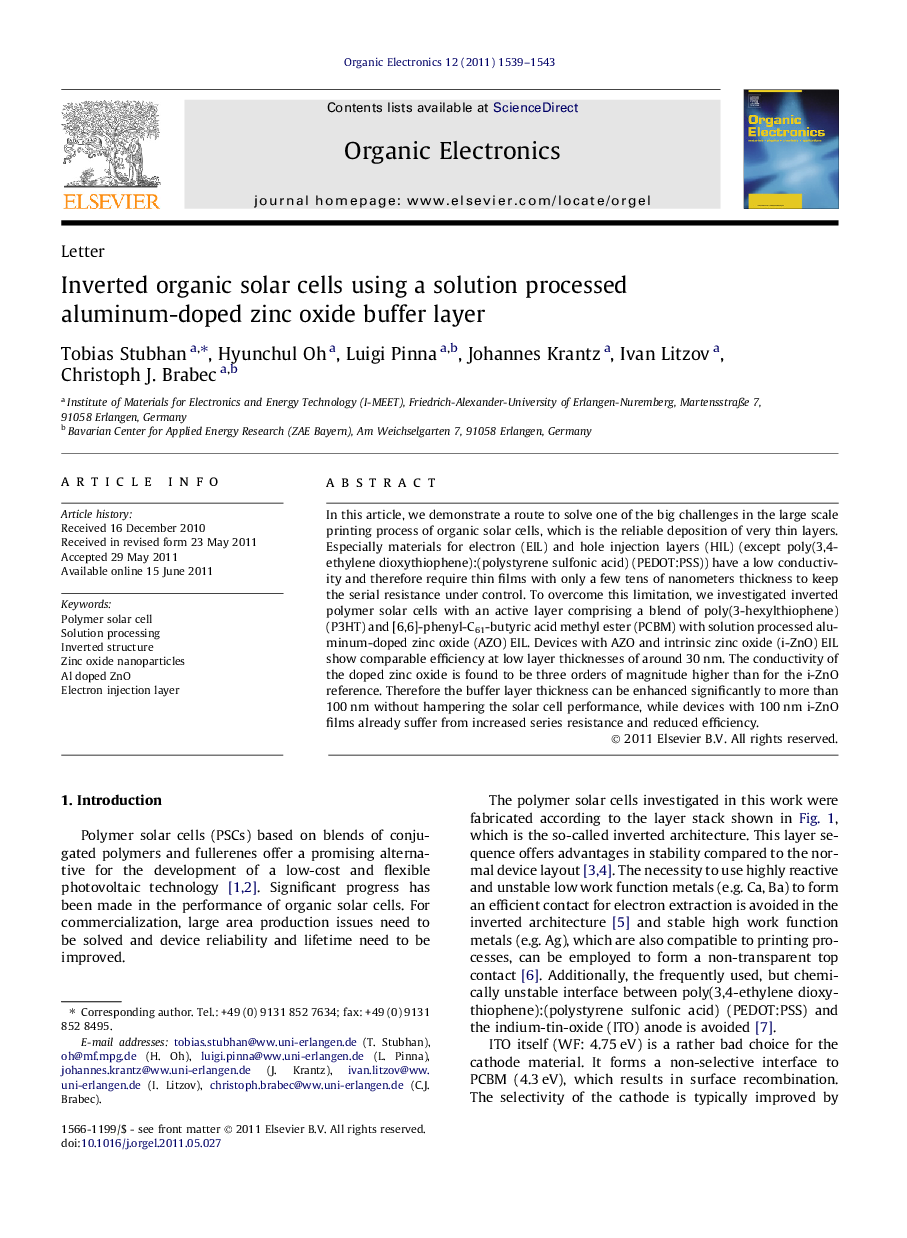| Article ID | Journal | Published Year | Pages | File Type |
|---|---|---|---|---|
| 1265303 | Organic Electronics | 2011 | 5 Pages |
In this article, we demonstrate a route to solve one of the big challenges in the large scale printing process of organic solar cells, which is the reliable deposition of very thin layers. Especially materials for electron (EIL) and hole injection layers (HIL) (except poly(3,4-ethylene dioxythiophene):(polystyrene sulfonic acid) (PEDOT:PSS)) have a low conductivity and therefore require thin films with only a few tens of nanometers thickness to keep the serial resistance under control. To overcome this limitation, we investigated inverted polymer solar cells with an active layer comprising a blend of poly(3-hexylthiophene) (P3HT) and [6,6]-phenyl-C61-butyric acid methyl ester (PCBM) with solution processed aluminum-doped zinc oxide (AZO) EIL. Devices with AZO and intrinsic zinc oxide (i-ZnO) EIL show comparable efficiency at low layer thicknesses of around 30 nm. The conductivity of the doped zinc oxide is found to be three orders of magnitude higher than for the i-ZnO reference. Therefore the buffer layer thickness can be enhanced significantly to more than 100 nm without hampering the solar cell performance, while devices with 100 nm i-ZnO films already suffer from increased series resistance and reduced efficiency.
Graphical abstractFigure optionsDownload full-size imageDownload as PowerPoint slideHighlights► We made solution-processed polymer solar cells in the inverted structure. ► We compared doped and intrinsic zinc oxide (ZnO) as electron injection layer (EIL). ► Al doped ZnO shows three orders of magnitude higher conductivity than intrinsic ZnO. ► The impact of these EILs with increased thickness on the efficiency was determined. ► We demonstrate efficient solar cells with over 100 nm thick Al doped ZnO layers.
